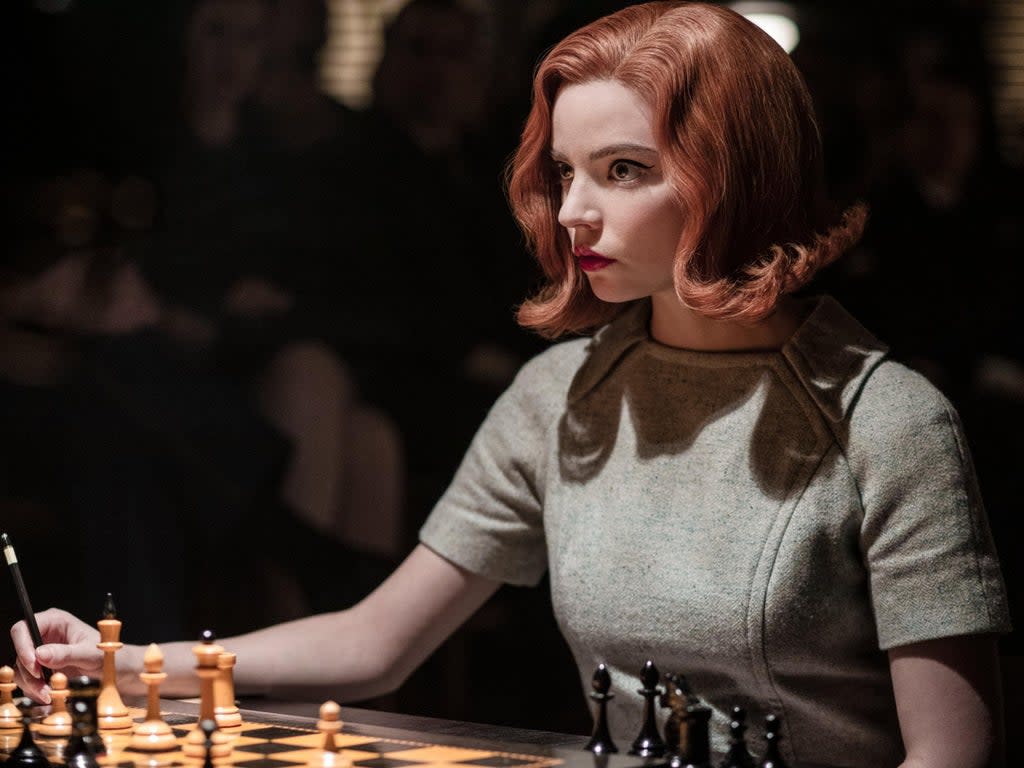Famous at 12, a drug addict at 13: I was the real-life Queen’s Gambit Beth. Here’s what they got wrong

After The Queen’s Gambit won 11 Emmy awards including Best Limited Series, my phone blew up. Everyone wanted to know if I’d seen the show. It was only a matter of time before they did, so friends’ reactions didn’t surprise me. I was glad the world could finally fall in love with the game whose 64 black and white squares had been my home for the past 34 years. But I couldn’t watch it.
You see, I was the nonfiction version of the hero Beth, right down to the red hair (only mine was curly.) When I turned 12, after seven years playing in scholastic tournaments, I was exhausted. At 13, my career teaching chess took off — as did my addiction to hard drugs. I never planned on being a chess teacher my whole life but every time I quit, it came right back. That’s probably why I felt safe pushing it away.
At four, I’d fallen in love with a chess board. My bewildered parents got a red and black cardboard set. My dad and I began to learn. None of us could have imagined where those early sessions would lead me.
While Beth graduated high school, received a Bulova watch from her mother, and jetted off to Mexico City, I’d had one abortion, two rapes, and a miscarriage at 14 in the lobby bathroom of my Brooklyn school. I was running 40 chess classes a week and about to take a night job as a stripper. I fended off advances from the fathers of students, players, and instructors by day. At night, gentlemen refused to believe a girl could even play.
Feeling like a fraud, I’d step out of early morning classes to puke whatever alcohol I’d binged-drunk the night before into the children’s toilets. I was not yet 20. My gender never went unremarked when I played the game. I learned to use chess as a litmus test for potential romance. If the man swiped the board to the floor when I said “check mate” — which happened often — he would not be my real mate.
My body parts were always up for conversational grabs. I fended off verbal and physical advances without thinking. It was admission price for my seat at the table. “Dress like a girl,” a lone female teacher advised before I went to tournaments. “They’ll underestimate you.”
Still today when I tell men I teach chess, they most often reply: “So, do you play it?” Others attempt to correct me, suggesting I mean checkers.
Unlike Beth, my tournament garb was flannel buttoned-down shirts, sweatpants, and thick plastic glasses. It was the early ’90s — being a boy with the boys and a girl with the girls was the system I knew.
World champion Gary Kasparov and “America’s favorite teacher” Bruce Pandolfini (who I taught with as a teen) made sure the chess in Queen’s Gambit was accurate. The portrayal of being a woman in a man’s world was not.
I quit because chess demanded all of me, and I gave it all of me. I turned to hard drugs, sex, and alcohol in order to cope with the huge amounts of pressure on my 12-year-old shoulders. Unlike Beth, I wasn’t propelled into tournament chess by my addiction to drugs. I was derailed.
I couldn’t quit speed chess. I played in chess stores, streets, decadent — or putrid — apartments. Chess was the one constant in my life, and I couldn’t let it go. But eventually even it began to crack; my students started to correct my teaching, the board blurred. I found myself getting sober at 37.
Covid was the first time since I was 13 that I wasn’t racing around boroughs juggling boards. Chess once again brought the world to me, only this time online. Clients and classes from everywhere showed up on my screen. It finally occurred to me to be grateful. It was time to watch the show.
I couldn’t watch straight through, much to my chessmaster boyfriend’s annoyance. Seeing Beth abuse alcohol and drugs was the closest I’d gotten to such substances since the start of my own sobriety 13 months earlier. As we watched, my partner and I noted how the people playing onscreen moved unrealistically fast in a made-for-TV way, and enjoyed Beth’s description of why she liked chess, how the 64 black and white squares were a world in miniature within her control.
When Beth headed towards the bar the night before her big match with the Russian champion, my boyfriend paused the episode. I asked him what he was doing. He replied: “Giving her a chance to change her mind.”
I waited in silence until he felt it was time to start the show again. She still went ahead and ordered that drink. I did, too, every time.
These days, however, I am learning to live soberly in the entire world — not just the 64 squares.
Read More
Like Gabby Petito, my sister went missing then was found dead
Editorial: The government has no choice but to spray money at the economy
Opinion: Why are Anglo-American cultural offerings like James Bond so seductive?
Letters: Gas price rises show that we need to invest in home-grown clean energy
Opinion: We need to reimagine dementia care using the power of music
Opinion: Calling women ‘birds’ isn’t banter when only one of you is laughing

 Yahoo News
Yahoo News 
